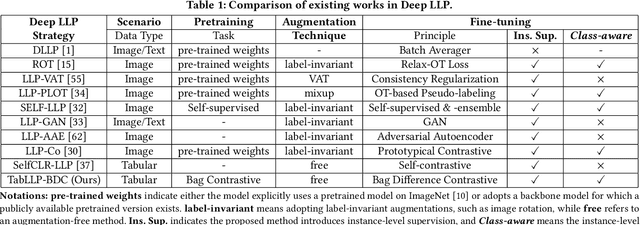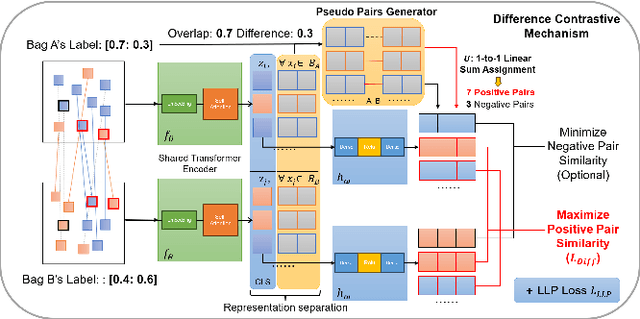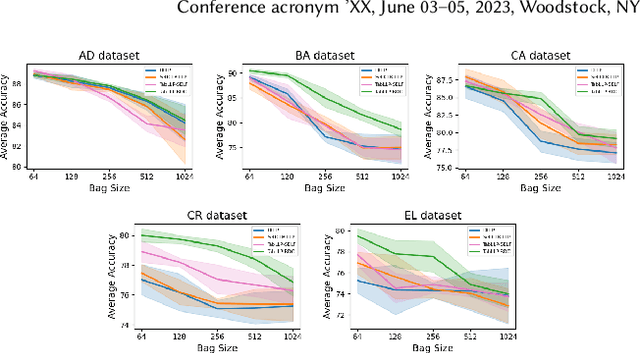Shimin Di
E3-Rewrite: Learning to Rewrite SQL for Executability, Equivalence,and Efficiency
Aug 12, 2025Abstract:SQL query rewriting aims to reformulate a query into a more efficient form while preserving equivalence. Most existing methods rely on predefined rewrite rules. However, such rule-based approaches face fundamental limitations: (1) fixed rule sets generalize poorly to novel query patterns and struggle with complex queries; (2) a wide range of effective rewriting strategies cannot be fully captured by declarative rules. To overcome these issues, we propose using large language models (LLMs) to generate rewrites. LLMs can capture complex strategies, such as evaluation reordering and CTE rewriting. Despite this potential, directly applying LLMs often results in suboptimal or non-equivalent rewrites due to a lack of execution awareness and semantic grounding. To address these challenges, We present E3-Rewrite, an LLM-based SQL rewriting framework that produces executable, equivalent, and efficient queries. It integrates two core components: a context construction module and a reinforcement learning framework. First, the context module leverages execution plans and retrieved demonstrations to build bottleneck-aware prompts that guide inference-time rewriting. Second, we design a reward function targeting executability, equivalence, and efficiency, evaluated via syntax checks, equivalence verification, and cost estimation. Third, to ensure stable multi-objective learning, we adopt a staged curriculum that first emphasizes executability and equivalence, then gradually incorporates efficiency. Extensive experiments show that E3-Rewrite achieves up to a 25.6\% reduction in query execution time compared to state-of-the-art methods across multiple SQL benchmarks. Moreover, it delivers up to 24.4\% more successful rewrites, expanding coverage to complex queries that previous systems failed to handle.
Beyond path selection: Better LLMs for Scientific Information Extraction with MimicSFT and Relevance and Rule-induced(R$^2$)GRPO
May 28, 2025Abstract:Previous study suggest that powerful Large Language Models (LLMs) trained with Reinforcement Learning with Verifiable Rewards (RLVR) only refines reasoning path without improving the reasoning capacity in math tasks while supervised-finetuning(SFT) with distillation can. We study this from the view of Scientific information extraction (SciIE) where LLMs and reasoning LLMs underperforms small Bert-based models. SciIE require both the reasoning and memorization. We argue that both SFT and RLVR can refine the reasoning path and improve reasoning capacity in a simple way based on SciIE. We propose two-stage training with 1. MimicSFT, using structured reasoning templates without needing high-quality chain-of-thought data, 2. R$^2$GRPO with relevance and rule-induced rewards. Experiments on scientific IE benchmarks show that both methods can improve the reasoning capacity. R$^2$GRPO with mimicSFT surpasses baseline LLMs and specialized supervised models in relation extraction. Our code is available at https://github.com/ranlislz/R2GRPO.
RemoteSAM: Towards Segment Anything for Earth Observation
May 23, 2025Abstract:We aim to develop a robust yet flexible visual foundation model for Earth observation. It should possess strong capabilities in recognizing and localizing diverse visual targets while providing compatibility with various input-output interfaces required across different task scenarios. Current systems cannot meet these requirements, as they typically utilize task-specific architecture trained on narrow data domains with limited semantic coverage. Our study addresses these limitations from two aspects: data and modeling. We first introduce an automatic data engine that enjoys significantly better scalability compared to previous human annotation or rule-based approaches. It has enabled us to create the largest dataset of its kind to date, comprising 270K image-text-mask triplets covering an unprecedented range of diverse semantic categories and attribute specifications. Based on this data foundation, we further propose a task unification paradigm that centers around referring expression segmentation. It effectively handles a wide range of vision-centric perception tasks, including classification, detection, segmentation, grounding, etc, using a single model without any task-specific heads. Combining these innovations on data and modeling, we present RemoteSAM, a foundation model that establishes new SoTA on several earth observation perception benchmarks, outperforming other foundation models such as Falcon, GeoChat, and LHRS-Bot with significantly higher efficiency. Models and data are publicly available at https://github.com/1e12Leon/RemoteSAM.
DioR: Adaptive Cognitive Detection and Contextual Retrieval Optimization for Dynamic Retrieval-Augmented Generation
Apr 14, 2025Abstract:Dynamic Retrieval-augmented Generation (RAG) has shown great success in mitigating hallucinations in large language models (LLMs) during generation. However, existing dynamic RAG methods face significant limitations in two key aspects: 1) Lack of an effective mechanism to control retrieval triggers, and 2) Lack of effective scrutiny of retrieval content. To address these limitations, we propose an innovative dynamic RAG method, DioR (Adaptive Cognitive Detection and Contextual Retrieval Optimization), which consists of two main components: adaptive cognitive detection and contextual retrieval optimization, specifically designed to determine when retrieval is needed and what to retrieve for LLMs is useful. Experimental results demonstrate that DioR achieves superior performance on all tasks, demonstrating the effectiveness of our work.
A Selective Learning Method for Temporal Graph Continual Learning
Mar 03, 2025Abstract:Node classification is a key task in temporal graph learning (TGL). Real-life temporal graphs often introduce new node classes over time, but existing TGL methods assume a fixed set of classes. This assumption brings limitations, as updating models with full data is costly, while focusing only on new classes results in forgetting old ones. Graph continual learning (GCL) methods mitigate forgetting using old-class subsets but fail to account for their evolution. We define this novel problem as temporal graph continual learning (TGCL), which focuses on efficiently maintaining up-to-date knowledge of old classes. To tackle TGCL, we propose a selective learning framework that substitutes the old-class data with its subsets, Learning Towards the Future (LTF). We derive an upper bound on the error caused by such replacement and transform it into objectives for selecting and learning subsets that minimize classification error while preserving the distribution of the full old-class data. Experiments on three real-world datasets validate the effectiveness of LTF on TGCL.
A Pilot Empirical Study on When and How to Use Knowledge Graphs as Retrieval Augmented Generation
Feb 28, 2025Abstract:The integration of Knowledge Graphs (KGs) into the Retrieval Augmented Generation (RAG) framework has attracted significant interest, with early studies showing promise in mitigating hallucinations and improving model accuracy. However, a systematic understanding and comparative analysis of the rapidly emerging KG-RAG methods are still lacking. This paper seeks to lay the foundation for systematically answering the question of when and how to use KG-RAG by analyzing their performance in various application scenarios associated with different technical configurations. After outlining the mind map using KG-RAG framework and summarizing its popular pipeline, we conduct a pilot empirical study of KG-RAG works to reimplement and evaluate 6 KG-RAG methods across 7 datasets in diverse scenarios, analyzing the impact of 9 KG-RAG configurations in combination with 17 LLMs. Our results underscore the critical role of appropriate application conditions and optimal configurations of KG-RAG components.
Class-aware and Augmentation-free Contrastive Learning from Label Proportion
Aug 13, 2024



Abstract:Learning from Label Proportion (LLP) is a weakly supervised learning scenario in which training data is organized into predefined bags of instances, disclosing only the class label proportions per bag. This paradigm is essential for user modeling and personalization, where user privacy is paramount, offering insights into user preferences without revealing individual data. LLP faces a unique difficulty: the misalignment between bag-level supervision and the objective of instance-level prediction, primarily due to the inherent ambiguity in label proportion matching. Previous studies have demonstrated deep representation learning can generate auxiliary signals to promote the supervision level in the image domain. However, applying these techniques to tabular data presents significant challenges: 1) they rely heavily on label-invariant augmentation to establish multi-view, which is not feasible with the heterogeneous nature of tabular datasets, and 2) tabular datasets often lack sufficient semantics for perfect class distinction, making them prone to suboptimality caused by the inherent ambiguity of label proportion matching. To address these challenges, we propose an augmentation-free contrastive framework TabLLP-BDC that introduces class-aware supervision (explicitly aware of class differences) at the instance level. Our solution features a two-stage Bag Difference Contrastive (BDC) learning mechanism that establishes robust class-aware instance-level supervision by disassembling the nuance between bag label proportions, without relying on augmentations. Concurrently, our model presents a pioneering multi-task pretraining pipeline tailored for tabular-based LLP, capturing intrinsic tabular feature correlations in alignment with label proportion distribution. Extensive experiments demonstrate that TabLLP-BDC achieves state-of-the-art performance for LLP in the tabular domain.
Computation-friendly Graph Neural Network Design by Accumulating Knowledge on Large Language Models
Aug 13, 2024



Abstract:Graph Neural Networks (GNNs), like other neural networks, have shown remarkable success but are hampered by the complexity of their architecture designs, which heavily depend on specific data and tasks. Traditionally, designing proper architectures involves trial and error, which requires intensive manual effort to optimize various components. To reduce human workload, researchers try to develop automated algorithms to design GNNs. However, both experts and automated algorithms suffer from two major issues in designing GNNs: 1) the substantial computational resources expended in repeatedly trying candidate GNN architectures until a feasible design is achieved, and 2) the intricate and prolonged processes required for humans or algorithms to accumulate knowledge of the interrelationship between graphs, GNNs, and performance. To further enhance the automation of GNN architecture design, we propose a computation-friendly way to empower Large Language Models (LLMs) with specialized knowledge in designing GNNs, thereby drastically shortening the computational overhead and development cycle of designing GNN architectures. Our framework begins by establishing a knowledge retrieval pipeline that comprehends the intercorrelations between graphs, GNNs, and performance. This pipeline converts past model design experiences into structured knowledge for LLM reference, allowing it to quickly suggest initial model proposals. Subsequently, we introduce a knowledge-driven search strategy that emulates the exploration-exploitation process of human experts, enabling quick refinement of initial proposals within a promising scope. Extensive experiments demonstrate that our framework can efficiently deliver promising (e.g., Top-5.77%) initial model proposals for unseen datasets within seconds and without any prior training and achieve outstanding search performance in a few iterations.
Cardinality Estimation on Hyper-relational Knowledge Graphs
May 24, 2024Abstract:Cardinality Estimation (CE) for query is to estimate the number of results without execution, which is an effective index in query optimization. Recently, CE over has achieved great success in knowledge graphs (KGs) that consist of triple facts. To more precisely represent facts, current researchers propose hyper-relational KGs (HKGs) to represent a triple fact with qualifiers, where qualifiers provide additional context to the fact. However, existing CE methods over KGs achieve unsatisfying performance on HKGs due to the complexity of qualifiers in HKGs. Also, there is only one dataset for HKG query cardinality estimation, i.e., WD50K-QE, which is not comprehensive and only covers limited patterns. The lack of querysets over HKG also becomes a bottleneck to comprehensively investigate CE problems on HKGs. In this work, we first construct diverse and unbiased hyper-relational querysets over three popular HKGs for investigating CE. Besides, we also propose a novel qualifier-attached graph neural network (GNN) model that effectively incorporates qualifier information and adaptively combines outputs from multiple GNN layers, to accurately predict the cardinality. Our experiments illustrate that the proposed hyper-relational query encoder outperforms all state-of-the-art CE methods over three popular HKGs on the diverse and unbiased benchmark.
Emergence Learning: A Rising Direction from Emergent Abilities and a Monosemanticity-Based Study
Dec 17, 2023Abstract:In the past 20 years, artificial neural networks have become dominant in various areas, continually growing in scale. However, the current analysis of large models has mainly focused on functionality, overlooking the influence of scale differences on their properties. To address this, we propose the concept of Emergence Learning, which emphasizes the significance of scale. By studying models of different scales, we have identified a key factor in achieving higher performance in large models: the decrease of monosemantic neurons. Building on this insight, we propose a proactive approach to inhibit monosemanticity for improved performance. Our solution involves a two-phase process that includes monosemantic neuron detection and inhibition, supported by theoretical analysis. Experimental results on various tasks and neural networks demonstrate the effectiveness of our proposed method. Following the idea of Emergence Learning, though drawing inspiration from scaling phenomena, the applicability of our method is not restricted to large scale alone. Therefore, the experiment is self-contained. However, extending this research to very large-scale datasets is appealing yet impossible for research departments due to limited resources. We are delighted to share the first co-authorship and eagerly await collaboration from any AI company before submission.
 Add to Chrome
Add to Chrome Add to Firefox
Add to Firefox Add to Edge
Add to Edge